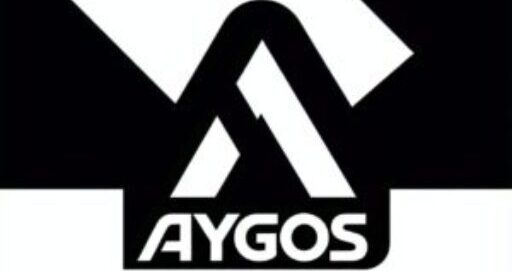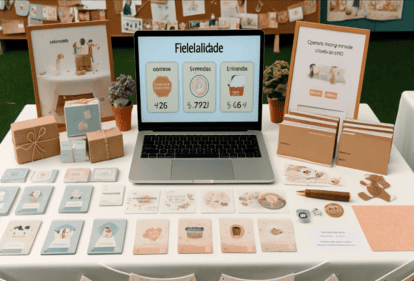Customer loyalty is essential for any business, and the craft industry is no exception. A well-designed loyalty program can encourage repeat purchases, strengthen customer relationships, and increase brand visibility. In this article, you’ll learn how to structure an effective loyalty program for your craft business.
1. Why Create a Loyalty Program?
Retaining customers is more cost-effective than constantly acquiring new ones. A loyalty program can:
- Increase Repeat Sales: Customers who receive benefits are more likely to return.
- Strengthen Brand Connection: The program makes customers feel special and appreciated.
- Differentiate Your Business: In a competitive market, offering rewards can be a valuable selling point.
2. Choose the Right Type of Loyalty Program
There are several types of loyalty programs. Choose one that best fits your business model.
a) Points-Based Program
Customers earn points with each purchase and can redeem them for discounts or free products.
- Example: For every $1 spent, the customer earns 1 point. Once they reach 100 points, they receive a free product or discount.
b) Tiered Loyalty Program
Customers unlock new benefits as they spend more, encouraging long-term engagement.
- Example:
- Silver Level: 5% off after spending $50.
- Gold Level: 10% off and free shipping after spending $100.
- Platinum Level: 15% off, exclusive products, and early access to sales after spending $200.
c) VIP Club
A subscription-based model where customers pay a small fee to receive exclusive benefits.
- Example: A $10/month VIP membership includes free shipping, early access to new collections, and exclusive discounts.
d) Referral Program
Encourage customers to bring in new buyers by offering rewards for referrals.
- Example: When a customer refers a friend who makes a purchase, both receive a $5 discount.
3. Define the Rewards
Choose rewards that provide real value to your customers. Consider:
- Discounts on Future Purchases
- Exclusive, Limited-Edition Products
- Early Access to New Collections
- Free Gifts or Samples
- Personalized Offers (e.g., birthday discounts)
Tip: Balance the value of the rewards with your profit margins to ensure sustainability.
4. Make It Easy to Join
Customers should be able to sign up for your loyalty program quickly and effortlessly.
- Online Signup: Allow customers to register via your website.
- In-Store Registration: If you sell at craft fairs, provide a QR code or sign-up form.
- Simple Tracking System: Use digital tracking instead of paper punch cards for ease of use.
Example: Offer a 10% discount on the first purchase for customers who sign up for your loyalty program.
5. Promote Your Loyalty Program
To maximize participation, actively market your program across different channels.
- Social Media: Create posts explaining the benefits and how to join.
- Email Marketing: Send newsletters highlighting rewards and special promotions.
- Website Pop-Ups: Display a sign-up prompt on your homepage.
- Packaging Inserts: Include a flyer with orders to invite customers to enroll.
Example: Run a limited-time promotion where customers earn double points for purchases made during the first week of the program.
6. Track and Optimize the Program
Monitor the effectiveness of your loyalty program to ensure it meets your business goals.
- Analyze Customer Participation: Check how many people sign up and redeem rewards.
- Adjust Rewards: If certain rewards are unpopular, modify them based on customer feedback.
- Engage Inactive Members: Send reminder emails to customers who haven’t redeemed their points.
Pro Tip: Conduct customer surveys to understand how you can improve the program.
7. Personalize the Experience
A personalized touch makes customers feel valued and more likely to engage with your brand.
- Send Birthday Discounts
- Recommend Products Based on Past Purchases
- Offer Special Deals for Long-Term Customers
Example: “Happy Birthday! Enjoy 15% off your next order as a thank-you for being a loyal customer.”
8. Keep It Simple and Fun
A complicated loyalty program can discourage participation.
- Use Clear Rules: Ensure customers understand how to earn and redeem rewards.
- Gamify the Experience: Create fun challenges, such as “Buy 5 items and get a mystery gift.”
- Regularly Update the Program: Keep things exciting with new perks or seasonal bonuses.
Example: A craft store could run a holiday bonus where customers earn double points for Christmas gift purchases.
9. Encourage Social Sharing
Leverage social media to boost engagement with your loyalty program.
- Hashtag Campaigns: Encourage customers to share their rewards using a branded hashtag.
- Customer Spotlights: Feature loyal customers in social media posts.
- Exclusive Giveaways: Offer additional perks for customers who tag your brand.
Tip: Run a monthly contest where members who share a photo of their purchase are entered to win a free product.
10. Evaluate Long-Term Benefits
A well-run loyalty program should contribute to business growth.
- Increased Customer Retention: Loyal customers return more often and spend more per order.
- Higher Word-of-Mouth Marketing: Satisfied customers naturally recommend your brand to others.
- Stronger Brand Identity: A great loyalty program builds long-term relationships with customers.
Example: A craft business implementing a points-based program saw a 25% increase in repeat purchases within six months.
Conclusion: Build Customer Loyalty for Sustainable Growth
A well-executed loyalty program helps build lasting relationships with customers, increasing retention and sales. By choosing the right model, offering valuable rewards, and keeping the process simple and engaging, you can turn first-time buyers into lifelong fans of your craft business. Start designing your loyalty program today and watch your brand flourish!

